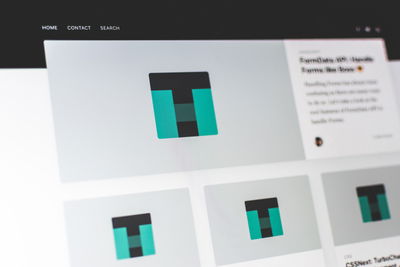Designing a Multi-Lingual Website
Designing a multi-lingual website is no small task and requires careful considerations when selecting a development language and the right tools for the job. Website maintenance, customer experience and user integration are some of the key success factors that must be addressed in order to successfully execute a multi-lingual website. This article will outline the considerations that must be made when designing a multi-lingual online presence.Содержание:

Identifying Language Components
Designing a multi-lingual website requires the proper identification of the language components that will be used. It is important to determine which languages will be used, and what dialects. Additionally, the language components must accurately represent the various languages. Furthermore, the components must integrate easily with the design of the website, so that it will be appealing to visitors from the different language backgrounds. The typography, structure, and interface of the website must rely on the language components to be successful. It is important to ensure the website is accessible, and easy to use, for visitors from all language backgrounds. By accurately identifying the language components and implementing them into the website design, a successful multi-lingual website can be created. Вам нужен сайт? Хотите создать сайт, но не знаете с чего начать? Наш конструктор сайтов - идеальное решение. Простая в использовании и с возможностью настройки в соответствии с потребностями вашего бизнеса, вы можете быстро получить профессиональный веб-сайт.
Selecting The Right Development Language
When designing a multi-lingual website, selecting the right development language can be a crucial decision. Languages like HTML and CSS are considered universal, as they will allow you to create a website design that can function across multiple languages. Having a versatile framework to work from is especially important for multi-lingual websites, as you will need quick and easy access to all of the content in order to switch back and forth between languages.Additionally, there are programming languages like JavaScript and PHP that can be used depending on the type of content that needs to be managed. For example, if the website needs to store a lot of data like images, videos, and other documents, then JavaScript and PHP would be the right choice. On the other hand, HTML and CSS are better suited for logo and text design, which would be the case for a simple website.
Ultimately, it is important to carefully consider the function of the website when selecting a development language. With the right selection, it will be easier to build a multi-lingual website that meets all of the necessary requirements.
Creating A Friendly UI
Creating an intuitive and user-friendly UI is essential for designing a multi-lingual website. Users should be able to easily identify buttons, menus and other UI elements and understand how they can interact with them.A user-friendly UI should use large typography and clear language, so that users can quickly interpret the action that a button or link will take them on. Using icons and images can also help users to orientate on the page and quickly identify which language they are viewing.
The interface should also display information regarding the languages available on the website and a method for users to switch easily between them. Making the search bar also appear in multiple languages can be a useful tool for users looking for a more efficient browsing experience.
By creating a user-friendly UI, users will be able to find the information they need quickly, even if they do not understand the language of the current page being viewed.
Country-Specific Features
When designing a multi-lingual website, it is important to include country-specific features. These may include domain localization (a domain name associated with a specific region or language), country flags used as visual cues to indicate the language of the website, and relevant local currency support. Localizing the domain name can allow for better search engine optimization in location-specific or language-specific searches. Country flags can also serve as a visual cue for people who are not familiar with the language of the website, and provide an easy way to switch between languages. Finally, providing support for local currencies can help with increasing conversions and customer confidence. By considering country-specific features, a website can become more user-friendly and more attractive to international customers.Implementing Automated Translation
Designing an effective, multi-lingual website presents an important challenge to web designers. One important aspect of this challenge is incorporating automated translation services. Automated translation services allow for a seamless translation from one language to another. With the help of these services, website visitors can select a language and quickly see content translated in the selected language.The implementation of automated translation is a complex process. The web designer must first select a translation engine to use. Some popular translation engines used on internet sites are Google Translate and Bing Translate. After selecting the translation engine, the web designer must then customize the translation engine’s settings to ensure that web visitors receive accurate, consistent translations. The web designer must also consider how to store translated content and how to ensure that translations are kept up-to-date.
The implementation of automated translation into a website is an important step in the process of making a multi-lingual website. By incorporating automated translation, website designers can help ensure that web visitors have access to content in their preferred language.
Maximizing SEO Potential
Designing a multi-lingual website is a great way to reach a larger audience and make your business or website more accessible. To maximize SEO potential when designing a multi-lingual website, there are several steps you should take.First, make sure that all language versions of your website contain the same content. Duplicate content reduces the visibility of your website and may lead to being penalized by search engines. Additionally, be sure to provide accurate translation of all content.
Second, create dedicated URLs for each language version of your website. In this way, users can easily navigate to the appropriate language version. Additionally, using dedicated URLs makes it easier for search engines to efficiently crawl and index your website.
Third, ensure that you include relevant language meta-tags when creating each language version of your website. This helps to specify the language of the content, aiding search engine ranking and helping users to recognize the difference between language versions.
Planning for SEO when designing a multi-lingual website will help to maximize the visibility of your website, reaching a larger audience and increasing traffic. Taking the time to implement these steps will ensure that you have a successful multi-lingual website.
Incorporating Multi-Cultural Content
When designing a multi-lingual website, multi-cultural content is an important element to include. This helps to ensure that websites are accessible and welcoming to visitors from different cultures and backgrounds. To achieve this, websites should make use of culturally sensitive imagery and content as well as ensure that all translations are accurate. When utilizing translations, it is important to incorporate local terms, expressions and cultural nuances to ensure that the message is understood. Additionally, websites should include translations in the target language’s native script as well as the option to switch between right-to-left and left-to-right text. Furthermore, including videos in different languages can help to effectively convey a message to a wider audience accurately.Testing & Evaluating
Testing and evaluating a multi-lingual website is an important part of the design process. It helps to ensure that when a user visits a website from another language or region, they can easily understand the content and interact with the site.Testing a multi-lingual website involves verifying that all of the languages look and function properly, that all content is easily understood, and that the language translations are accurate. This process should be done both manually and with automated tests.
Evaluation of a multi-lingual website should look at user experience, performance, and usability. This can include assessing how well the language selection module works, how user friendly the website is in each language, and whether all features of the website are available in multiple languages.
The results of testing and evaluating a multi-lingual website should be used to improve the overall user experience. Regular re-tests and evaluation should be completed to ensure the website is correctly localized and meeting the needs of its users.





